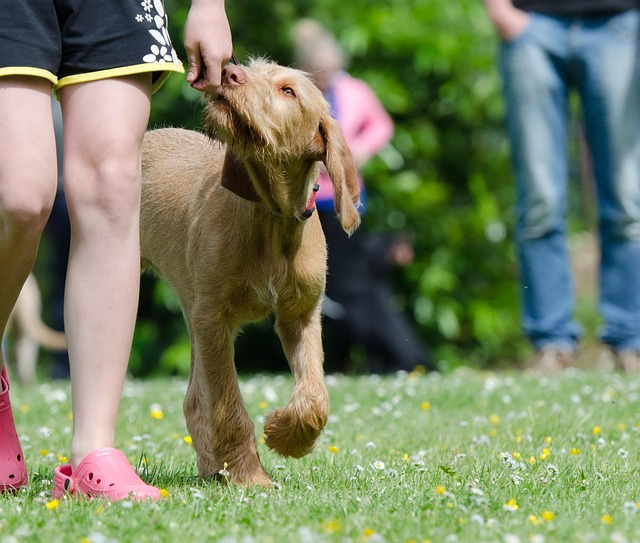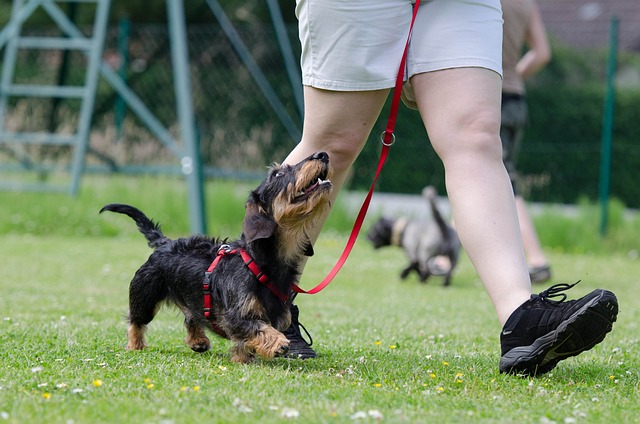“How long does it take to train a dog?” It’s one of the most common questions asked by dog owners, especially those who are new to training or dealing with behavior challenges. While it may seem like a simple question, the answer is anything but.
Training a dog isn’t a one-size-fits-all process. The timeline depends on several factors, including the dog’s age, history, temperament, the training goals, and—most critically—how consistent the training is at home. Some behaviors may improve within days, while others take weeks or even months to reliably solidify.
This guide lays out what influences the length of the training process and provides realistic expectations based on typical training goals.
What Does “Trained” Really Mean?
Before estimating how long training might take, it’s important to define what “trained” means in context. For some, it’s a dog that sits when asked. For others, it’s a dog that walks calmly through crowded areas off-leash or behaves reliably around other animals.
Generally, training falls into three broad categories:
- Basic manners and obedience – Commands like “sit,” “stay,” “come,” and “leave it,” along with polite leash behavior and house manners.
- Behavior modification – Addressing issues such as fear, reactivity, aggression, or anxiety.
- Advanced training or specialty work – Tasks related to service work, agility, off-leash reliability, or therapy certification.
Each of these comes with different timelines, and the time required increases with complexity and the dog’s learning history.
Key Factors That Affect Training Time
There’s no universal timeline because every dog—and every training environment—is different. However, several key factors consistently influence how quickly a dog learns:
Age
Puppies are eager and impressionable but require short, frequent sessions due to limited focus and impulse control. Adults tend to be better at concentrating but may have habits that require undoing. Senior dogs can absolutely learn, though physical or sensory limitations may require adapting the approach.
Breed and Temperament
Some breeds are more naturally focused, eager to please, or handler-oriented. Others may be more independent or easily distracted. Breed traits can influence the type of motivation that works best and how quickly training progresses. Temperament also plays a role—timid or anxious dogs may take longer to feel safe enough to learn.
Past Experiences
Dogs with a history of trauma, inconsistent training, or neglect may need more time to build trust and confidence. Rescue dogs, for example, often benefit from slow, relationship-based training that helps them feel secure before more formal cues are introduced.
Training Goals
Simple commands like “sit” or “come” in a quiet living room can be taught in a matter of minutes. Teaching those same commands around distractions—or addressing complex behaviors like fear or leash reactivity—can take months or longer. The more advanced the goal, the more time and repetition required.
Consistency and Environment
Dogs learn best through repetition and routine. A dog who practices commands several times a day in real-world settings will progress far faster than one who only trains once a week. Consistency among all members of the household is also essential—mixed messages slow progress.
Estimated Timelines for Common Training Goals

These timelines represent general expectations for dogs receiving daily, structured training in a supportive environment. Individual results will vary.
Basic Obedience (Sit, Stay, Come, Leash Walking)
Most dogs can begin responding to basic cues within a few weeks, but reliability—especially in distracting environments—typically develops over 2 to 4 months with consistent reinforcement.
Potty Training
Puppies usually need 2 to 6 months to become fully house-trained, depending on age, consistency, and environment. Adult dogs may learn faster, while small breeds may require more frequent breaks.
Crate Training
Most dogs adjust to crate training in a few weeks to a couple of months, depending on how gradually and positively it’s introduced. For dogs with negative past experiences, the process may take longer.
Behavior Modification (e.g., Reactivity or Fearfulness)
Changing emotional responses to triggers is a gradual process. Initial improvements may be noticeable within 4 to 8 weeks, but meaningful change typically requires 3 to 12 months or more of structured work and environmental management.
Advanced or Specialized Training
Training for service tasks, therapy certification, or competitive obedience can require 6 months to 2 years of structured training, ongoing reinforcement, and regular public exposure.
The Role of Daily Practice and Real-Life Application
Dogs don’t learn skills in a vacuum. While dedicated sessions help, the most effective training happens during real-life interactions.
- Asking for a “sit” before meals, walks, or attention reinforces impulse control.
- Practicing recall at the park builds reliability in outdoor settings.
- Rewarding calm behavior when visitors enter the home teaches politeness in high-distraction moments.
Short, 5–10 minute training sessions scattered throughout the day are far more effective than infrequent, long ones. Integration into daily life makes behavior second nature.
Progress Isn’t Always a Straight Line
Even with consistent effort, dogs don’t always progress in a perfectly upward trajectory. It’s common for dogs to hit learning plateaus or regress temporarily—especially during adolescence (typically 6–18 months).
This doesn’t mean the training isn’t working. It simply means the dog is developing, testing boundaries, or needing reinforcement under new circumstances. Regressions are part of the process and are best met with patience and calm leadership.
Training Is an Ongoing Process
While most dogs can learn basic commands within a few months, training doesn’t stop once the basics are in place. Just like people, dogs benefit from ongoing education and practice throughout their lives.
Maintaining skills requires reinforcement—especially for behaviors that don’t come naturally to the dog. Even well-trained dogs need occasional refreshers, especially if routines change, new environments are introduced, or problem behaviors begin to resurface.
Regular training strengthens the dog-owner bond, builds confidence, and keeps the dog mentally engaged. For most dogs, training becomes a way of life, not just a short-term project.
Conclusion
The question “how long does it take to train a dog?” doesn’t have a single answer. Timelines vary based on the dog, the training goals, the environment, and the consistency of the effort put in.
Some skills will come quickly. Others—especially those involving emotional responses or deeply ingrained habits—will take time and repetition. What matters most is approaching training with realistic expectations, steady follow-through, and a willingness to adjust as needed.
Rather than focusing on how fast training can be completed, focus on how well it’s done. Training isn’t about perfection; it’s about creating a reliable system of communication and building a partnership based on trust. The time invested in doing it right will pay off in a lifetime of better behavior, stronger connections, and shared understanding.





